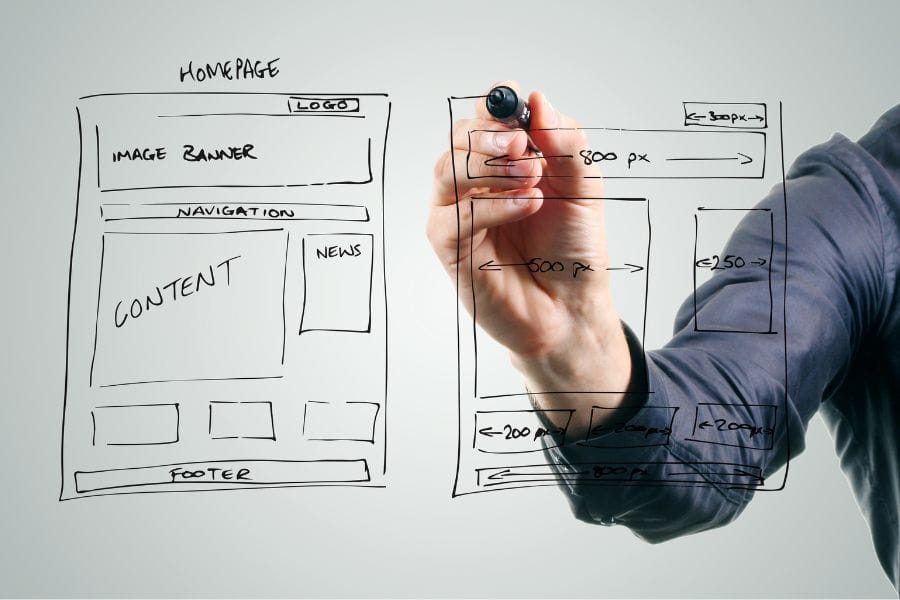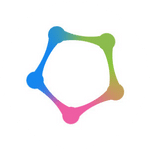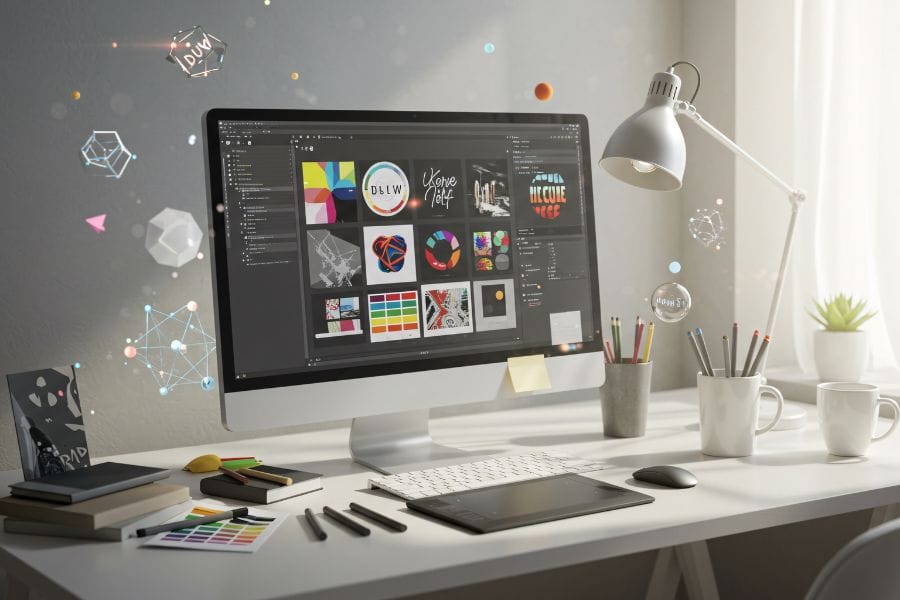A single misplaced “Buy” button cost one company $500 million annually—a stark reminder that user experience design isn’t just about aesthetics, it’s about business survival. As digital products become the primary touchpoint between companies and customers, the demand for skilled UX designers has skyrocketed, with employment projected to grow 16% from 2022 to 2032.
Whether you’re a startup launching your first mobile app or an established company looking to revamp your digital presence, knowing how to hire a UX designer can make the difference between a product that delights users and one that drives them away. This comprehensive guide will walk you through everything you need to know about finding, evaluating, and hiring the right UX talent for your team.
From understanding the different types of designers to crafting effective job descriptions and evaluating portfolios, we’ll cover all the details you need to make informed hiring decisions that align with your business objectives and drive measurable results.
Why Companies Need to Hire UX Designers
The business case for hiring UX designers extends far beyond creating visually appealing interfaces. These professionals serve as the bridge between user needs and business goals, using data-driven research and testing to create seamless interactions that directly impact your bottom line.
UX designers create user-friendly digital products that increase customer satisfaction and drive business growth through evidence-based design decisions. Their work involves conducting user research to understand pain points, developing user personas, and creating user journeys that guide customers toward desired actions. This systematic approach to design process results in products that not only look good but perform well in the real world.
The financial impact of poor user experience design cannot be overstated. Beyond the famous $500 million button example, companies regularly lose customers due to confusing navigation, slow loading times, and frustrating checkout processes. Most UX designers understand that even small improvements in usability can lead to significant increases in conversion rates and customer retention.
Employment for UX designers is projected to grow 16% from 2022 to 2032, making skilled designers increasingly valuable in today’s competitive market. This growth reflects the increasing reliance on digital products across all industries and the recognition that user experience directly correlates with business success.
Companies with strong UX design see improved brand reputation, customer loyalty, and competitive advantage in digital markets. They benefit from reduced customer support costs, higher user satisfaction scores, and increased key performance indicators across their digital touchpoints. The investment in quality UX design pays dividends through improved user feedback and long-term customer relationships.
What to Look for When You Hire a UX Designer
When evaluating candidates to hire UX designers, focus on a combination of technical skills, design thinking, and collaboration abilities that indicate their potential to contribute meaningfully to your design projects.
A strong portfolio showcasing user research, wireframes, prototypes, and usability testing results should be your primary evaluation tool. Look for case studies that demonstrate the complete design process, from initial problem identification through final implementation and measurement. The designer’s portfolio should reveal their approach to solving complex problems and their ability to translate user needs into practical design solutions.

Proficiency in design tools like Figma, Adobe XD, Sketch, and basic HTML/CSS knowledge represents the technical foundation every qualified UX designer should possess. However, tool knowledge alone isn’t sufficient, candidates should demonstrate how they use these tools to create responsive layouts that work across different screen sizes and devices.
User-centered design approach with demonstrated empathy for user needs and pain points distinguishes great designers from merely competent ones. Top UX designers show evidence of conducting user research, creating user personas, and validating design decisions through usability tests. They should be able to articulate how their design ideas address specific user problems and contribute to broader business objectives.
Experience with information architecture, interaction design, and accessibility standards (WCAG guidelines) ensures that candidates can create designs that work for all users. This includes understanding how to structure content logically, design intuitive navigation systems, and ensure that interfaces are accessible to users with disabilities.
Problem-solving skills to analyze complex problems and create practical design solutions should be evident throughout their work history. Look for examples where candidates have tackled challenging design constraints, worked within limited resources, or solved unique user experience challenges specific to their industry or target audience.
Communication skills and collaboration abilities to work effectively with product managers, developers, and cross functional teams are crucial for success in most organizations. Talented designers must be able to present their work clearly, incorporate user feedback effectively, and work collaboratively with team members who may not have design backgrounds.
Junior vs Mid-Level vs Senior UX Designers
Understanding the different experience levels helps you determine which type of designer aligns with your project scope, budget constraints, and team dynamics.
Junior UX designers have foundational skills, conduct basic user research, and bring fresh perspectives but need guidance on complex projects. Typically possessing 0-2 years of experience, entry level designers excel at executing specific tasks like creating wireframes, conducting simple usability tests, and supporting more experienced team members with research activities. They often bring enthusiasm and knowledge of current industry trends but may require mentorship for strategic decision-making and stakeholder management.
Mid-level designers manage design projects independently, excel in interaction design and information architecture, and can mentor junior team members. With 2-5 years of experience, these professionals can handle most aspects of the design process autonomously while contributing to design systems and cross functional teams. They typically have a deep understanding of user interface design principles and can balance user needs with technical constraints effectively.
Senior UX designers offer strategic leadership, oversee design systems, influence product roadmaps, and ensure alignment with business goals. These experienced professionals, typically with 5+ years in the field, can transform abstract business challenges into concrete design solutions that drive measurable results. They often serve as the voice of the user in product decisions and can lead design teams while maintaining hands-on involvement in critical design projects.
Choose based on your project complexity, budget, and need for mentorship versus independence. Startups often benefit from hiring senior designers who can establish design processes and mentor growing teams, while larger organizations might focus on mid-level designers who can execute within established frameworks. Consider your company’s goals and the level of design maturity within your organization when making this decision.
UX Designer vs UI Designer vs UX/UI Designer
Understanding the distinction between these roles helps ensure you hire the right skills for your specific needs and project requirements.
UX designers focus on user research, user journeys, information architecture, and overall user experience strategy. Their primary responsibility involves understanding user needs through research, creating user flows that guide people through digital experiences, and ensuring that products solve real problems effectively. They spend significant time analyzing user behavior, conducting interviews, and testing prototypes to validate design decisions.
UI designers handle visual elements, layouts, typography, colors, and interface aesthetics that users interact with directly. They focus on visual design principles, creating visually appealing interfaces that align with brand guidelines while ensuring consistency across all digital touchpoints. Their expertise lies in translating UX frameworks into polished, pixel-perfect designs that enhance the overall user interface.
UI UX designers combine both skill sets, making them versatile but potentially less specialized than dedicated practitioners. These hybrid professionals can handle the complete design process from initial user research through final visual implementation. While this versatility makes them valuable for smaller teams and startups, they may lack the depth of specialization that larger projects or complex products require.
Most companies prefer hiring UI/UX designers for startups and smaller teams, while larger companies often hire specialists who can focus deeply on their area of expertise. The choice depends on your team structure, project complexity, and whether you need someone who can wear multiple hats or dive deep into specific aspects of the user experience design process.
The order “UI/UX” vs “UX/UI” may indicate which skill set the designer emphasizes more, with the first designation typically representing their primary strength or the aspect of design they prioritize in their work approach.
How to Write an Effective UX Designer Job Description
Creating a compelling job description attracts qualified candidates while filtering out those who don’t match your specific requirements and company culture.
Clearly define whether you need UX, UI, or combined UI UX skills to attract the right candidates for your specific project needs. This clarity helps potential applicants self-select based on their expertise and prevents mismatched expectations during the interview process. Be explicit about whether you’re seeking a UX specialist or someone who can handle broader design responsibilities.
Outline core responsibilities including user research, wireframing, prototyping, and usability testing to give candidates a clear picture of their day-to-day work. Include specific activities like creating user personas, developing information architecture, conducting user interviews, and collaborating with product managers and development teams. This detail helps candidates understand the scope of work and assess their fit for the role.
Specify required technical skills, experience level, and educational background relevant to your design project and company needs. List specific design tools, programming languages (if applicable), and any industry-specific knowledge that would be beneficial. Include both must-have skills and nice-to-have qualifications to help candidates understand your priorities.
Describe your company culture and how the UX designer will impact business goals to attract candidates who align with your values and vision. Explain your team structure, collaboration style, and the designer’s role in achieving company objectives. This information helps candidates assess cultural fit and understand how their work contributes to broader organizational success.
Include whether you’re seeking full-time, part-time, or freelance arrangements to set clear expectations about the employment relationship. Specify location requirements, remote work policies, and any travel expectations. Be transparent about compensation ranges if your budget allows, as this can attract serious candidates and reduce time spent on mismatched applications.
End with a clear call to action encouraging qualified applicants to apply, specifying exactly what materials you want to see and how candidates should submit their applications. Request specific portfolio pieces, design process examples, or case studies that demonstrate the skills most relevant to your open position.
Essential UX Designer Interview Questions
Effective interview questions reveal both technical competence and cultural fit while providing insight into the candidate’s problem-solving approach and collaboration style.
Ask about their approach to ensuring accessibility and inclusivity, focusing on WCAG standards and barrier identification to assess their commitment to designing for all users. Request specific examples of how they’ve implemented accessibility features, tested designs with assistive technologies, or advocated for inclusive design practices within their teams. This question reveals both technical knowledge and design philosophy.
Inquire about their user research methods and how they build empathy with users to understand their approach to evidence-based design. Ask for specific examples of research techniques they’ve used, how they synthesize findings into actionable insights, and how they balance user needs with business constraints. Strong candidates should demonstrate systematic approaches to understanding user behavior and motivations.
Explore their experience with A/B testing and data-driven design decisions to evaluate their ability to validate design choices through measurement. Ask about specific metrics they’ve tracked, how they’ve used analytics to inform design iterations, and their process for balancing quantitative data with qualitative user feedback. This reveals their analytical thinking and commitment to measurable results.
Evaluate collaboration skills by discussing experiences with cross functional teams, particularly their ability to communicate design rationale to non-designers. Ask about challenging stakeholder situations they’ve navigated, how they incorporate feedback from developers and product managers, and their approach to advocating for user needs in business discussions.
Ask them to walk through a case study from their design portfolio, focusing on their problem-solving process rather than just final deliverables. Request details about their research methodology, key insights that influenced their design decisions, and how they measured the success of their solutions. This reveals their design thinking and ability to articulate their work effectively.
Test their knowledge of current UX design trends and continuous learning through questions about emerging technologies, design methodologies, or industry developments. Ask about recent conferences they’ve attended, blogs they follow, or new techniques they’ve experimented with. This indicates their commitment to professional growth and staying current in a rapidly evolving field.
How Much Does It Cost to Hire a UX Designer
Understanding the full cost of hiring helps you budget appropriately and set realistic expectations for different types of design talent and arrangements.
Entry-level UX designers typically charge $25-50 per hour for freelance work, making them accessible options for companies with limited budgets or straightforward design projects. These rates reflect their developing skills and need for guidance but can provide excellent value for basic wireframing, simple user research, or support work under senior supervision.
Experienced UX designers command $100+ per hour for specialized skills, reflecting their ability to handle complex projects independently and deliver strategic design solutions. Senior designers with expertise in specific industries, advanced research methodologies, or design system development often justify premium rates through their efficiency and ability to avoid costly design mistakes.
Full-time salaries range from $60,000-$100,000+ depending on location and experience, with major tech hubs like San Francisco and New York typically offering higher compensation packages. These base salaries don’t include the additional costs of benefits, equipment, training, and overhead that employers must consider when budgeting for a full time designer.
Total cost for employed designers can exceed $80,000 annually including salary, benefits, equipment, and training when factoring in health insurance, retirement contributions, design software licenses, professional development, and workspace setup. Companies should budget approximately 1.25-1.5 times the base salary to account for these additional expenses.
Freelance costs vary by project complexity, ranging from $15-25/hour for simple UI design work to $25-50/hour for comprehensive UX design cycles that include research, strategy, and testing. Project-based pricing often provides better value for both parties, with simple website redesigns starting around $5,000 and complex application design projects reaching $50,000 or more.
Regional variations significantly impact pricing, with Germany averaging $45/hour for freelance UX designers while qualified junior-to-mid designers in countries like India often charge $15-25/hour. Remote hiring opens access to global talent pools, allowing companies to balance cost considerations with quality requirements while leveraging platforms like Talentprise to find qualified candidates worldwide.
Where to Find and Hire UX Designers
Successful hiring requires knowing where to look for different types of design talent and understanding the strengths and limitations of various recruitment channels.
Specialized UX design job boards like Dribble Jobs and Behance provide access to active design communities where portfolio quality tends to be higher than general job sites. These platforms allow you to browse designer portfolios before posting jobs and often attract candidates who are passionate about design craft and stay current with industry trends.
Curated platforms like TopTal and Braintrust offer pre-vetted, high-quality UX designers who have already passed initial screening processes. While these services typically charge premium rates, they can significantly reduce your screening time and provide access to thoroughly evaluated freelance talent for both short-term projects and longer engagements.
General freelance platforms like Upwork and Freelancer offer large talent pools but require more careful screening to identify qualified designers among the broader applicant base. Focus on candidates with strong portfolios, relevant experience, and positive client feedback when using these platforms for design projects.
Talentprise serves as a global talent pool powered by AI for finding top UX candidates, offering access to vetted professionals from around the world. The platform specializes in connecting companies with qualified designers who have been evaluated for both technical skills and communication abilities, making it easier to find candidates who can work effectively in distributed teams and contribute to real world projects.
Leverage targeted outreach through networking, referrals, and social media, as statistics show that 79% of job seekers use social platforms for employment opportunities. LinkedIn, design community forums, and industry events provide opportunities to connect with designers who may not be actively job searching but could be interested in the right opportunity.
Design subscription services like Awesomic provide ongoing access to design talent for companies that need regular design work but don’t want to hire full-time employees. These services can be cost-effective for startups and growing companies that need consistent design support without the overhead of employment.
Recruitment agencies like Insight Global and Creative Circle offer full-service hiring support, handling everything from candidate sourcing to initial screening and salary negotiation. While these services charge fees (typically 15-25% of annual salary), they can be valuable for companies without internal recruiting capabilities or those seeking hard-to-find specialized skills.
How to Evaluate UX Designer Portfolios
Portfolio evaluation is your most important tool for assessing a candidate’s actual capabilities and determining whether their experience aligns with your project needs.
Look for case studies that show the complete design process, not just polished final visuals that hide the thinking and methodology behind design decisions. Strong portfolios demonstrate the designer’s approach to problem-solving, user research methods, iterative design thinking, and how they incorporate user feedback into their work. Each case study should tell a story about the challenge, process, and outcome.
Assess whether they demonstrate user research, problem identification, and solution validation through concrete examples and measurable results. Look for evidence of user interviews, surveys, usability testing, and other research methods that inform design decisions. Candidates should show how they identify user pain points and validate their solutions through testing and measurement.
Check for diversity in projects and industries to gauge adaptability and breadth of experience across different types of challenges and target audiences. Designers who have worked across various sectors demonstrate flexibility and the ability to understand different user contexts, business models, and technical constraints. This versatility can be particularly valuable for companies in specialized industries.
Evaluate if they show custom work or just adaptations of existing concepts, as original thinking and creative problem-solving are crucial for addressing unique business challenges. Look for evidence that designers can think beyond common patterns and create innovative solutions when standard approaches don’t meet user needs or business requirements.
Look for evidence of user testing, iteration, and data-driven design improvements that show commitment to validation and continuous improvement. Strong portfolios include examples of A/B testing results, usability testing findings, and how designers used data to refine their solutions. This demonstrates an analytical approach and commitment to measurable results.
Ensure the portfolio shows both UX thinking and visual design skills if hiring for combined UI UX roles, as hybrid positions require competence in both strategic thinking and execution. Look for examples that demonstrate information architecture, user flow design, wireframing skills, and polished visual interfaces that work well across different screen sizes and use cases.
Pay attention to how candidates present their work, as communication skills are crucial for explaining design decisions to stakeholders and collaborating with cross functional teams. Well-organized portfolios with clear explanations of design rationale indicate strong presentation abilities and attention to detail that will serve them well in client-facing situations.
Conclusion
Hiring the right UX designer requires a strategic approach that balances technical skills, design thinking, and cultural fit with your team and business objectives. The 16% projected growth in UX employment through 2032 means that competition for top talent will intensify, making it crucial to understand what distinguishes exceptional designers from the broader pool of candidates.
Remember that effective UX designers work as strategic partners who translate user needs into business value through evidence-based design decisions. Whether you need a junior designer to support existing projects or a senior UX specialist to lead design strategy, focus on candidates who demonstrate strong problem solving skills, user empathy, and the ability to create seamless interactions that drive measurable results.
The investment in quality UX design pays dividends through improved customer satisfaction, reduced development costs, and increased conversion rates. By following the framework outlined in this guide—from writing effective job descriptions to evaluating portfolios and conducting thorough interviews—you’ll be well-equipped to find talented designers who can contribute to your company’s success.
Ready to start your search for the perfect UX designer? Consider exploring global talent platforms like Talentprise Recruiter to access a curated pool of qualified candidates who can bring fresh perspectives and proven expertise to your design projects. Register a recruiter account now.

Editorial Team
Our team is fueled by a passion for crafting valuable content that enriches the experiences of our users, customers, and visitors. We meticulously select meaningful and unbiased topics ranging from tips and guides to challenges and the latest in technology, trends, and job market insights. All curated with care and affection!
Hire Smarter. Faster. No Strings Attached.
Start your free trial, no credit card needed, and experience AI-powered talent sourcing that outperforms job boards and LinkedIn. Describe the role, or paste a job description, and instantly match your vacant role with the right candidates: no filters, Boolean, or training required.




